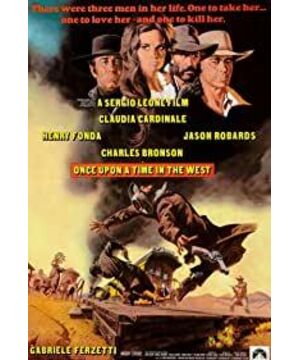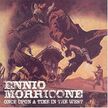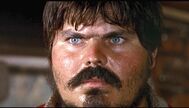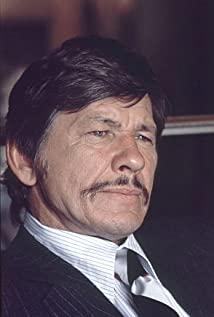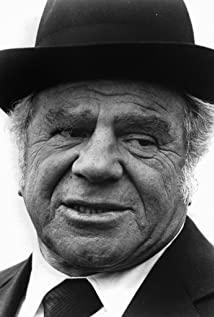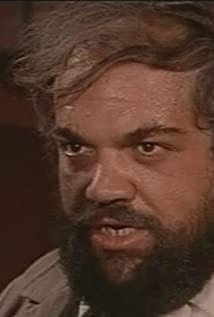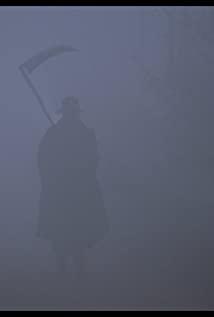To this day, Sergio Leone's "Once Upon a Time in the West" still occupies the status of the Big Dipper in the history of Western films. This film covers the richness of western elements and has a far-reaching influence, making it difficult for later western works to compare with each other. The film not only makes a grand summary of the predecessors' westerns, but also has guiding value for the later westerns. On the one hand, the film itself is discussing the passing of the American Western era. On the other hand, in the 1950s and 1960s, when Westerns were in full swing, the birth of this film is more meaningful.
Therefore, "Once Upon a Time in the West" is not only a dividing point in the history of Western films from prosperity to decline, but also a dividing point in the passing of the Western era in American history. Whether this film is on stage or behind the scenes, director Lionel intends to show us the tragic afterimages divided by the times.
An afterimage of the Western era
In the 1950s and 1960s, Westerns were very popular. In that era, someone once said that directors could succeed as long as they made Westerns, which shows the enthusiasm for Westerns at that time. At that time, classic western films such as "Flying Off the Mountains", "Blood and Sands" and "Red River" are equally brilliant today.
Just as documentaries were in Lumiere, magic films were in Méliès, and silent films were in Chaplin, the western boom will eventually fade away. At the end of the 1960s, people began to get tired of the routines of Western films - those characters that were incompatible with good and evil, and the tragic narrative of "Feng Xiao Xiao Xi Yi Shui Han", the audience began to refuse to buy it.
Sergio Leone was born at a time when Westerns were in decline. He has made great changes to the inherent routines of Western films, blurring the boundaries between good and evil, and adding a lot of jokes to tragic characters. Audiences have regained confidence in Westerns, and director Sergio Leone has stretched their glory years back.
As for the development trend of the decline of western movies, the director Lionon knows best in his heart - it is far from enough to rely on his own innovation. Western films at that time had actually reached their peak, and the western works of later generations could no longer surpass the classics of their predecessors, and all they did was to patch up. For example, later Western works such as Quentin Tarantino's "Django Unchained" and "The Hateful Eight" can be compared with previous works from the details to the whole.
Lionel knows this truth all too well. Therefore, after the "Red Dead" trilogy, he intends to break with the title of "Western director" and start planning "Once Upon a Time in America". It's just that investors are not as sensitive as him, and they even have a myth that the success of the "Red Dead Trilogy" shows that the audience still has a fanatical demand for Western films. Therefore, they made a request to Leone, the director who was very popular, to make another Western, and they were willing to invest any money.
Fortunately, investors are betting on such a talented director as Lionel. Facing the general trend, Leonéon knew that standing still would only lead to defeat, so he jumped out of the perspective of the fate of the western characters and looked at the western group portraits from the standpoint of changing times. "Once Upon a Time in the West" can be said to be a collection of Western films. With the help of the declining Western era and the arrival of industrial civilization, it expresses the director's pride in the division of the two eras.
The last afterimage of the bounty hunter
One of the most intriguing characters in the Western Age is the bounty hunter. In the early days of the United States, because the official manpower was insufficient, in order to bring criminals to justice, a reward was offered to the society. Anyone who killed or brought a criminal to justice could receive a reward. Under this extremely primitive and cruel system, a group of bounty hunters emerged.
As a result, the bounty hunter, a character officially put on the shell of justice, is loved by film art and sought after by the audience because of its chivalrous attributes and violent feelings. Such movies undoubtedly satisfy the audience's need for sensory stimulation, which is exactly the same as the martial arts novels that swept the Chinese world in the last century.
As a summary of Western films, "Once Upon a Time in the West" is of course indispensable to the historical afterimage of the bounty hunter. This task is placed on Harmonica and Shane, the protagonists of the film.
Shane is a character that is both good and evil. As he said, "I will kill anyone, but never children. I can kill a priest, a priest, that's all." This sentence reveals that as a bandit , he also has the side of "thief also has Tao". Although the whole movie did not deliberately show Shane's sense of justice, the audience couldn't help but divide him into the ranks of justice during the viewing process.
This kind of character that is both good and evil is what Lionon loves. In fact, there are many such characters in the Western era. In those days, the weak government control could easily lead to the collapse of social order. Everyone had to arm themselves if they wanted to survive. Violence was the only weapon that could safeguard their rights. In this context, even a fugitive who is officially hunted down may be a good person.
As the only righteous party in this film without any suspense, the harmonica player naturally plays the role of a bounty hunter. In order to get Mark Bain's land, he accidentally handed Shane over to the police at the auction, and received a bounty of 5,000 yuan to buy the land. However, Shane escaped from the police during the transport and returned to Sweetwater Town. (The film did not elaborate on what happened to Shane afterward. I think the director must have filmed this scene, or it may have been deleted due to the length of the film.)
The interesting thing about this passage is that from when Shane was handed over to the official by the harmonica player to when Shane escaped again, it can be seen that the two of them had carefully planned. The pair's dramatic scene is very much like "The Good and the Bad," where Tuco and Brandi cooperate with each other when they appear in the movie.
The original afterimage of the difficult survival
On the one hand, bounty hunters hunt down criminals in accordance with the law, and on the other hand, people in the western region have to roam inside and outside the law and use violence to protect their own rights and interests. It seems that bounty hunters are legitimate and just, but in fact there is no essential difference between the two - they are both for survival.
The era of the American West is also known as the "Reclamation Era". At that time, if you walked in the American West, you could almost see cowboys grazing on horseback and reclaiming the land. These people are hard-working and lonely, so hard for only two things, money and women. With regard to these afterimages unique to the Western era, Leon naturally refused to let go.
Mark Bain is a typical cowboy in the movie. He chose a piece of desert for reclamation, and planned the railway station, hoping that one day the train could reach here and become a rich man. Once, he went to New Orleans to meet a prostitute Jill, he promised to marry her, and Jill promised to go to Sweetwater to find him. This western cowboy has worked hard all his life to open up wasteland, and just in time when money and women are within reach, the whole family is wiped out. The hard life and the ruthless fate of Mark Bain is the true portrayal of many western cowboys.
In addition to the difficulty of reclamation, the cowboys must also prevent violent plunder. In the movie, Frank kills the Mark Bane family in order to acquire Mark Bane's land. Unexpectedly, Mark Bain also had a married wife, Jill, so Frank continued to send people to hunt him down. In the face of this brutal and bloody practice, fellow businessman Morton was extremely opposed.
Morton represents the new age of civilization, while Frank represents the old age of the West. The director uses the confrontation between the two villains to express the difference between the two civilizations. To put it simply, civilized society plunders with brains, while western age plunders with guns. In order to magnify the characteristics of Morton's brain, the director also portrayed him as a disabled person.
In the movie, Morton was put under house arrest by Frank because of differences of opinion. Who knew that he leaned on his mouth and used his brilliant brain to persuade Frank's men to rebel against Frank and almost killed Frank.
One is the brutal and bloody Frank style, and the other is the insidious Morton style "eating people without spitting bones". As far as movies are concerned, the director seems to prefer the former. Because Leone prefers real villains to hypocrites.
The director's inclination was reflected in Frank's negotiation with the harmonica player. After Frank went out, he was betrayed and raided by his subordinates. The reason why the harmonica player chose to help the enemy Frank was precisely this. On the one hand the harmonica player hated a hypocrite like Morton, on the other hand Frank lived in the same era as him and was a real villain.
Railroads Divide Era
In any case, those cowboys fighting for the west, those bounty hunters with the shell of justice, and those grudges, love and hatred caused by violence, after a railway brought economy and civilization to the west, have become the past. Everything in the new age has nothing to do with them.
In the movie, the two bandits Shane and Frank ended their lives with death, the harmonica guest left alone, and only the prostitute Jill stayed. Bandits acted as predators in the western era, so death is the best punishment for the injustice; the harmonica player left Sweetwater, because in the new era, bounty hunters are no longer needed by society, and he has no reason to stay In an era that didn't belong to him; as for Jill the prostitute to stay, I think, it's a gift from the director to her.
In many Western films, women almost all acted as prostitutes, and it can be seen that in those times, women could only be at the mercy of others. The director arranged a good home for Jill--inheriting her husband's huge inheritance, which I think all women in the Western era deserve.
Lionon expresses his memory of the western era in American history with tragic afterimages, and also implies that the once glorious western era in the history of movies is no longer there. Has the protagonist Harmonica ever been the incarnation of director Lionel himself? They are also disabled guests of the past era and are forced to face the arrival of a new era. The awkward position of this boundary line is full of sadness and loneliness, but the harmonica player chose to go back, and Lionel chose to die. After "Once Upon a Time in the West", "Once Upon a Time in the West", "The Unknown Boy" and "Once Upon a Time in America", the final film of Leon's film career, are all afterimages. No matter what the story structure of these films, their common significance is very obvious—— Remember the past.
In the era of lonely Westerns, a big director like Leone could not turn the tide.
View more about Once Upon a Time in the West reviews


